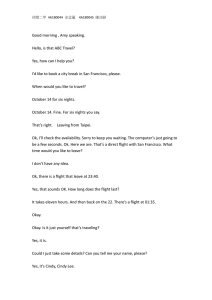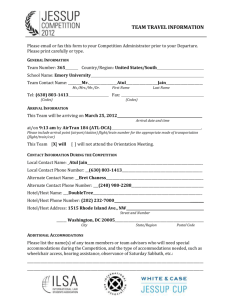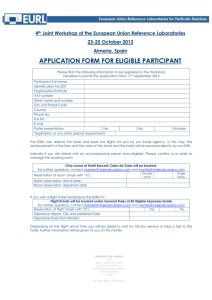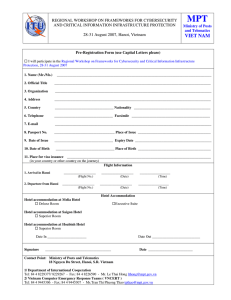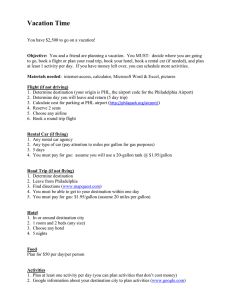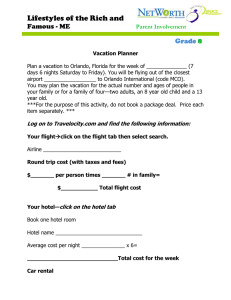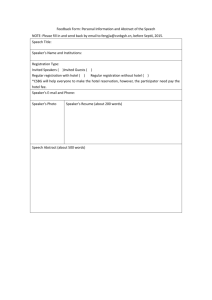Online Travel Agency Design Project
advertisement
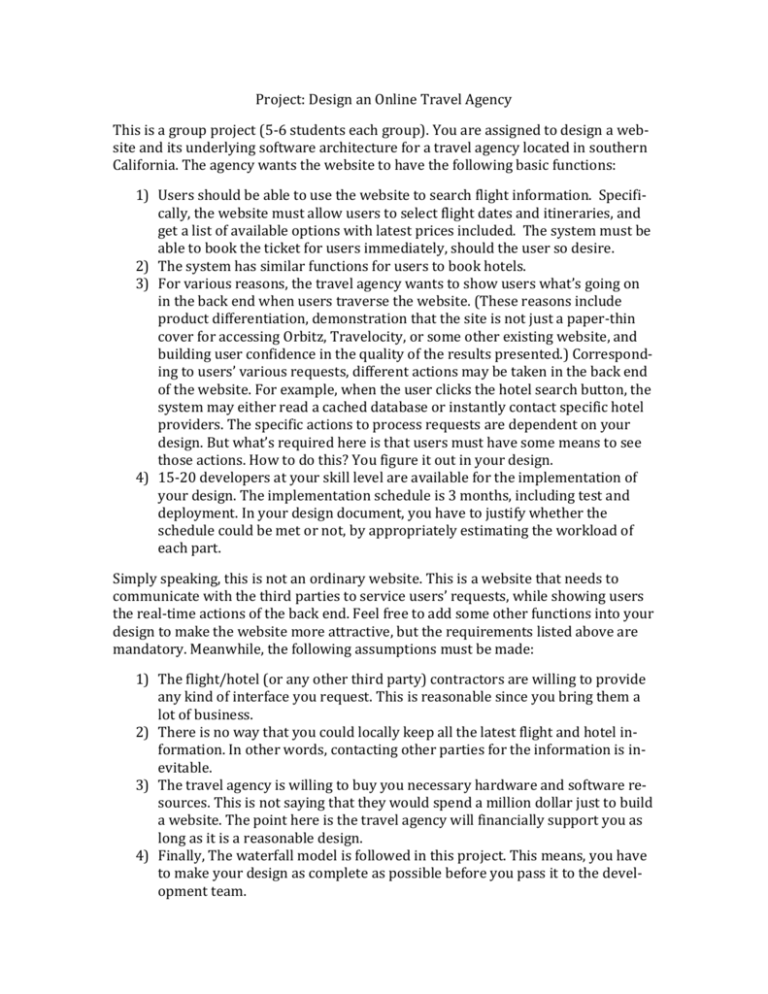
Project: Design an Online Travel Agency This is a group project (5-6 students each group). You are assigned to design a website and its underlying software architecture for a travel agency located in southern California. The agency wants the website to have the following basic functions: 1) Users should be able to use the website to search flight information. Specifically, the website must allow users to select flight dates and itineraries, and get a list of available options with latest prices included. The system must be able to book the ticket for users immediately, should the user so desire. 2) The system has similar functions for users to book hotels. 3) For various reasons, the travel agency wants to show users what’s going on in the back end when users traverse the website. (These reasons include product differentiation, demonstration that the site is not just a paper-thin cover for accessing Orbitz, Travelocity, or some other existing website, and building user confidence in the quality of the results presented.) Corresponding to users’ various requests, different actions may be taken in the back end of the website. For example, when the user clicks the hotel search button, the system may either read a cached database or instantly contact specific hotel providers. The specific actions to process requests are dependent on your design. But what’s required here is that users must have some means to see those actions. How to do this? You figure it out in your design. 4) 15-20 developers at your skill level are available for the implementation of your design. The implementation schedule is 3 months, including test and deployment. In your design document, you have to justify whether the schedule could be met or not, by appropriately estimating the workload of each part. Simply speaking, this is not an ordinary website. This is a website that needs to communicate with the third parties to service users’ requests, while showing users the real-time actions of the back end. Feel free to add some other functions into your design to make the website more attractive, but the requirements listed above are mandatory. Meanwhile, the following assumptions must be made: 1) The flight/hotel (or any other third party) contractors are willing to provide any kind of interface you request. This is reasonable since you bring them a lot of business. 2) There is no way that you could locally keep all the latest flight and hotel information. In other words, contacting other parties for the information is inevitable. 3) The travel agency is willing to buy you necessary hardware and software resources. This is not saying that they would spend a million dollar just to build a website. The point here is the travel agency will financially support you as long as it is a reasonable design. 4) Finally, The waterfall model is followed in this project. This means, you have to make your design as complete as possible before you pass it to the development team. The output of the project is a design document and a 20-minute presentation. Your design document should contain: 1) a clear specification of the application’s architecture, including all its interfaces, components, connectors, and constraints; 2) a description of your design process and a thoughtful reflection on your design, including the rationale behind it (telling a story about your design like what you read or heard about in the Petroski/Norman books would be appropriate); 3) if there is some special technology (such as J2EEE, CORBA) required, the rationale behind it should also be provided. Prof. Taylor and Yongjie will play the role of the development team at your presentation. That being said, they may ask any questions regarding to your design, even including implementation strategies and alternatives. Please note that item (2) above is as important as item (1). That does not mean it will be as long as item (1), but it must be given serious attention.
